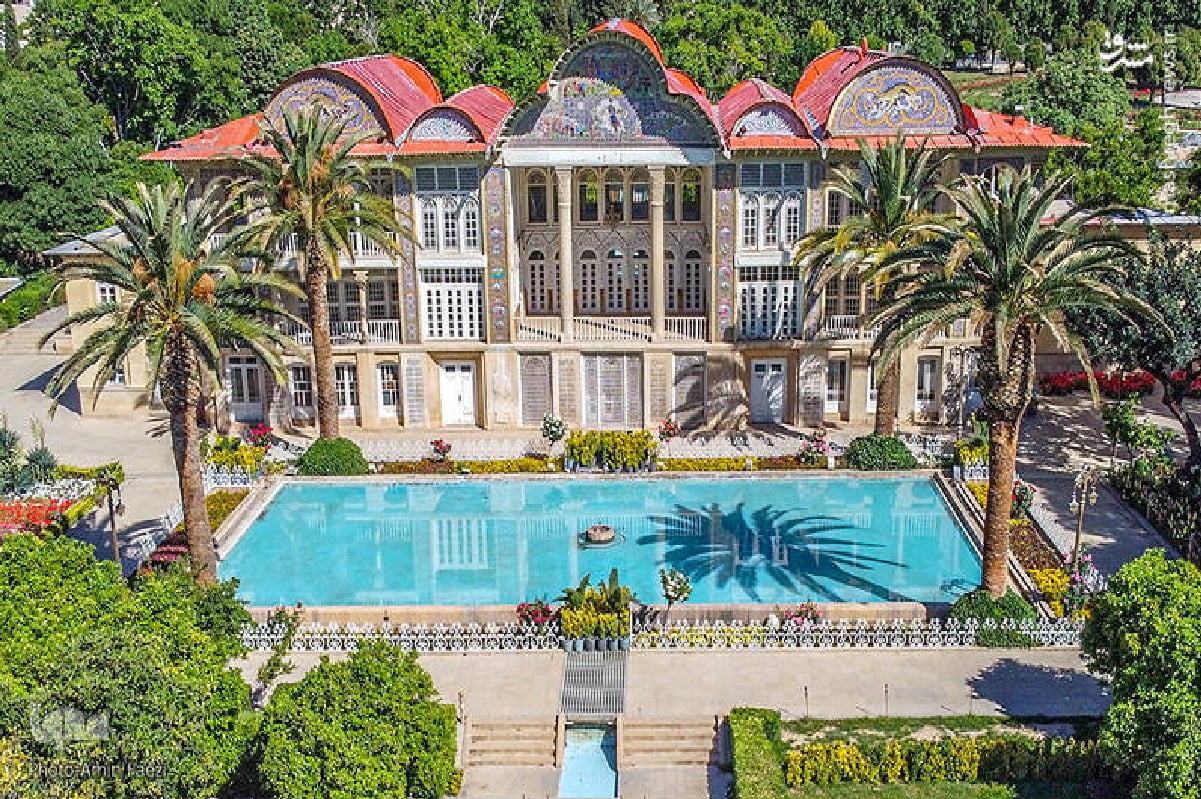Eram Garden, also known as Bagh-e Eram, is a historic Persian garden located in the city of Shiraz, Iran. It is a renowned tourist attraction and cultural landmark, with a rich history and a variety of notable features. The garden has been a source of inspiration for poets, artists, and writers for centuries, and it continues to be a beloved site for visitors from around the world.
The historical significance of the garden
Eram Garden has played an important role in the history of Shiraz and Iran as a whole. Its origins date back to the Seljuk period (11th-12th centuries), when it was known as the “Garden of Mercy.” Over time, the garden changed hands several times, and it was eventually purchased by a wealthy Qashqai tribal chief in the 18th century. The garden remained in the family’s possession until the mid-20th century when it was acquired by the Iranian government.
Today, Eram Garden is a popular tourist destination and a symbol of Persian culture and heritage. It has been designated a UNESCO World Heritage Site and is considered one of the finest examples of Persian garden design.

History of Eram Garden
Origins of the garden
The exact origins of the Eram Garden are unclear, but it is believed to have been established during the Seljuk period in the 11th-12th centuries. At that time, the garden was known as the “Garden of Mercy” and was owned by the local governor.
Construction and design
The garden as it exists today was largely constructed during the Qajar period in the 19th century. It was owned by a wealthy Qashqai tribal chief named Mohammad Hassan Khan Qashqai, who was known for his love of gardens and horticulture. He hired skilled artisans and craftsmen to design and construct the garden, which features a traditional Persian layout with a central pavilion, water features, and a variety of flora and fauna.
Changes and renovations over time
Over the years, Eram Garden has undergone several changes and renovations. In the early 20th century, the garden was purchased by a wealthy merchant named Haj Mirza Ali Mohammad Shirazi, who added new features and expanded the garden. Later, the garden was acquired by the Iranian government and was extensively renovated in the 1960s and 1970s. Today, the garden is maintained by the University of Shiraz.
read also: Jahan Nama Garden in Shiraz
Features of Eram Garden
Layout and design
Eram Garden features a traditional Persian layout, with a central pavilion surrounded by a geometrically arranged network of paths and planting beds. The garden is divided into several distinct sections, each with its own unique features and attractions.
Vegetation and flora
Eram Garden is known for its lush vegetation and rich variety of flora. The garden is home to a wide range of trees, shrubs, flowers, and other plants, including cypress, orange, pomegranate, and rose. The garden’s flora is carefully maintained and arranged to create a harmonious and aesthetically pleasing environment.
Water features
Water is an important element of Eram Garden’s design, and the garden features several water features, including pools, fountains, and streams. The water is carefully channeled and distributed throughout the garden, creating a soothing and tranquil atmosphere.
Architectural elements
In addition to its natural features, Eram Garden also includes several notable architectural elements, including the central pavilion, known as the “Andaruni,” which features intricate tile work and ornate carvings. Other notable structures include the “Talar-e Aineh” (Mirror Hall), which features decorative mirrors and stained glass windows, and the “Shahneshin-e Eram” (Eram Throne), a platform that was once used for public ceremonies and events.
read also : Afif Abad Garden in Shiraz
Cultural significance of Eram Garden
Poetry and literature inspired by the garden
Eram Garden has been a source of inspiration for Persian poets and writers for centuries. The garden is mentioned in several famous works of Persian literature, including the poetry of Hafez and Saadi, who were both born in Shiraz. These poets often used Eram Garden as a metaphor for love, beauty, and spirituality.
Role in Persian art and culture
Eram Garden is also an important symbol of Persian art and culture. The garden’s design and features have influenced Persian architecture, landscaping, and art for centuries. The garden is often depicted in Persian miniature paintings and other works of art, and its design has been replicated in gardens throughout Iran and beyond.
UNESCO World Heritage Site designation
In recognition of its cultural significance, Eram Garden was designated a UNESCO World Heritage Site in 2011. The designation recognizes the garden’s unique and valuable contribution to human history and culture and helps to ensure its preservation for future generations.
read also: about Delgosha Garden in Shiraz
Visitors’ experience at Eram Garden
Tourist attractions and amenities
Eram Garden is a popular tourist destination, and visitors can enjoy a variety of attractions and amenities. These include guided tours, cultural performances, and a gift shop selling traditional Persian handicrafts and souvenirs.
Local events and festivals
Throughout the year, Eram Garden hosts a variety of local events and festivals, including the annual Shiraz International Festival of Arts. These events attract visitors from around the world and help to promote Persian culture and heritage.
Accessibility and transportation
Eram Garden is located in the heart of Shiraz and is easily accessible by public transportation or taxi. The garden is open to visitors daily, and admission fees are reasonable.


















